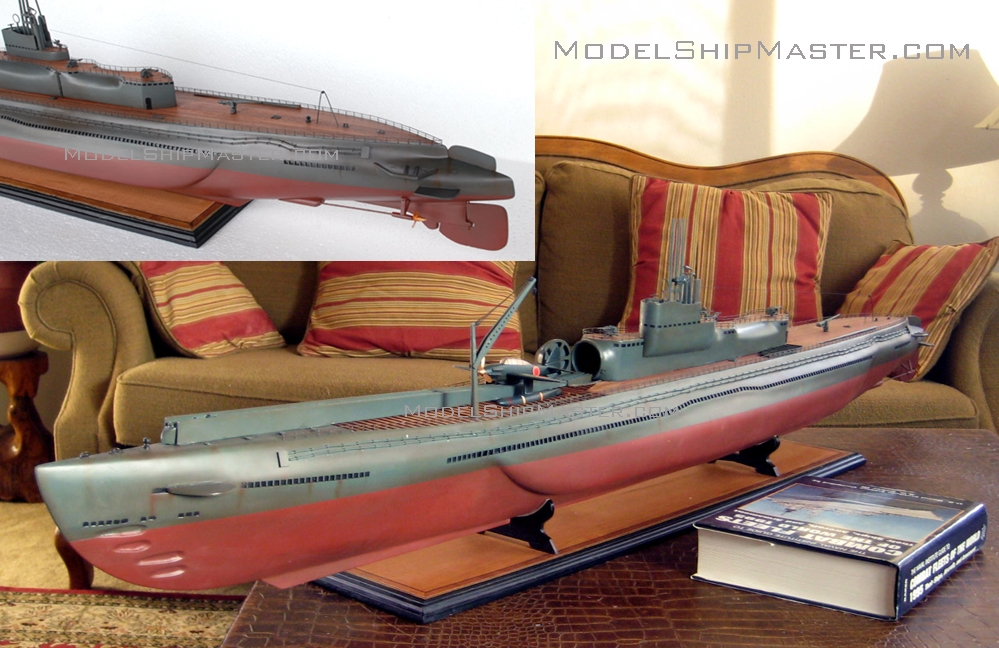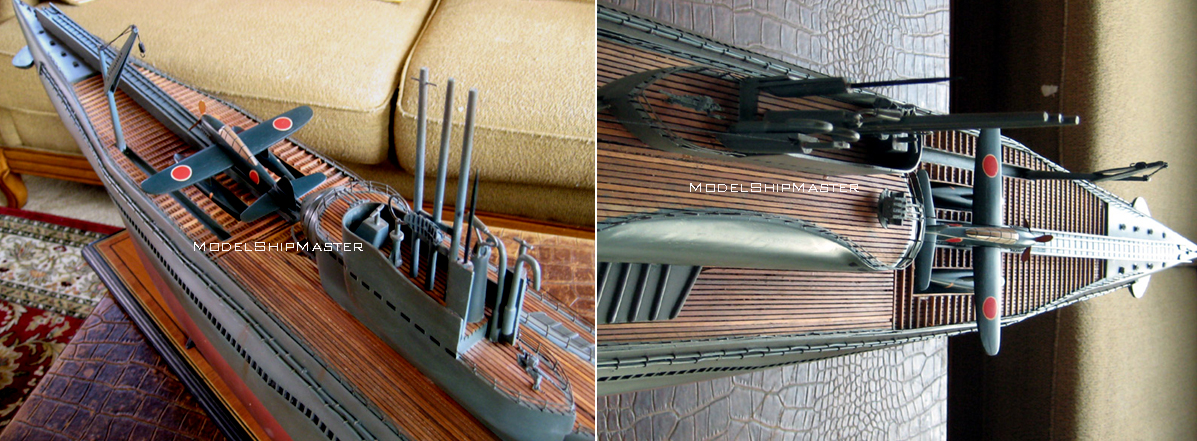|
I-400 Submarine model
I-400 submarine was the world's largest submarine
and remained the largest ever built until the
construction of nuclear ballistic missile submarines
in the 1960s. She
was actually a submarine aircraft carrier
that carried three aircrafts underwater to their
destinations. I-400 submarine was designed to
surface, launch their planes, then quickly dive
again before being discovered. For close-range
combat, she had 3 torpedoes.

The I-400
submarine could travel round-trip to anywhere in the world and
return. She was the brainchild of Admiral Isoroku Yamamoto, Commander-in-Chief of the Japanese
Combined Fleet. Shortly after the attack on
Pearl Harbor in December 1941, he conceived the idea
of taking the war to the United States mainland by
making aerial attacks against cities along the US
western and eastern seaboards using
submarine-launched naval aircraft. The first
target was the strategic Panama Canal, a journey
expected to take two months.
A fleet of 18
I-400 submarines was planned in 1942, and work
started
in January 1943. The actual costs of building
these crafts ran much higher than expected, and
within a year, following Yamamoto's death in April 1943, the number was
reduced to nine, then five and finally
three. Only I-400 submarine and I-401 actually entered
service; I-402 was completed five weeks before the
end of the war and never made it to sea.
The Japanese were ahead of the Allies in many
aspects of submarine development and underwater
weapons. During the WWII, they had 30 different
classes of submarines. In many
ways the I-400 submarine was decades ahead of her time. Japanese torpedo "Long Lance" were the world's most
dangerous.

This primarily wood I-400 submarine model
features:
- Plank-on-frame,
hollow
hull construction, weighing less than
15 lbs (A solid hull of this model would be over
60 lbs
which needs two people to handle and a fortified
table to accommodate)
- Windows and portholes are cutouts (not black decals)
65" long x 15" tall x 9" wide (1/72 scale)
$4,950  Shipping and insurance in
the contiguous USA included.
Other places: $800 flat rate.
This model is in stock and
can be shipped within five business days. Shipping and insurance in
the contiguous USA included.
Other places: $800 flat rate.
This model is in stock and
can be shipped within five business days.
Learn more about the I-400 submarine here:
https://en.wikipedia.org/wiki/I-400-class_submarine
|